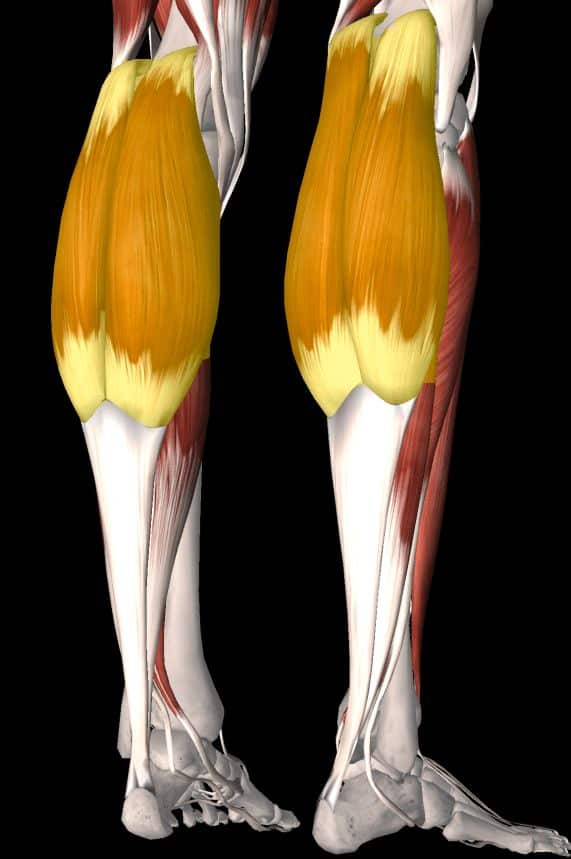
Knee pain is a common issue among athletes and active individuals, and it can be caused by a variety of factors. But while many focus on strengthening the quadriceps to help support the knee joint, the calf muscles are often overlooked. However, the calf muscles play a crucial role in knee strength, as they help to stabilize the joint during movement. In this blog post, we’ll explore the important contributions the calf muscles have on knee strength, and how you can incorporate calf exercises into your training routine.
The calf muscles are made up of the gastrocnemius and soleus muscles, which attach to the Achilles tendon and connect to the heel bone, and also attach proximally at the medial and lateral condyles at the knee joint. The Gastro-soleus complex is responsible for plantar flexion, which is the movement of pointing the toes downward. However, the calf is also a two joint, muscle, as mentioned earlier that contributes to knee flexion.
When the calf muscles contract, they help to stabilize the knee joint during movement. They act as a dynamic stabilizer, working to control the motion of the knee joint and prevent excessive movement that can lead to injury. Additionally, a strong calf muscle can help to reduce knee pain, as it can offload some of the stress on the joint during activity.
One study found that individuals with knee osteoarthritis who completed a 12-week calf muscle strengthening program experienced a reduction in knee pain and improved function*. This further highlights the importance of incorporating calf exercises into not only rehab programs, but overall performance programs.
So, how can you strengthen your calf muscles and improve knee strength?
There are a plethora of exercises that can strengthen the calf complex, aside from the traditional calf raise. Low position sled pushes can strengthen the entire calf muscle as the shin angle places the calf muscle in an extremely elongated position, giving you a bigger range of motion to work with in a dynamic fashion.
Keep in mind, incorporating calf raises into your training routine can not only improve knee strength but also enhance overall lower body strength and power. Additionally, be sure to include exercises that target the quadriceps, hamstrings, and shin muscles as these muscles also play a critical role in knee function and stability.
While knee pain may be caused by a variety of factors, strengthening the calf muscles can play a crucial role in improving knee strength, increasing performance, and reducing pain. As a two-joint muscle, the gastrocnemius has a synergistic role in knee flexion and acts as a dynamic stabilizer during movement. Incorporating a variety of calf exercises into your training routine can help to enhance knee strength, improve lower body function, and reduce the risk of injury. Make sure to be intentional about your calf strength.
References : https://www.jospt.org/doi/abs/10.2519/jospt.2015.5556
